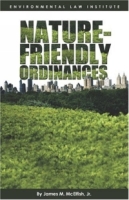| Nature-Friendly Ordinances артикул 584d. |
 |
Book DescriptionNature-Friendly Ordinances will help communities take affirmative steps to conserve and restore those biodiversity features of their environment that add value regionally and locally It is intended for all local decisionmakers that deal with land useplanning staff, planning and zoning boards, local legislative boards, ождэв and property owners Land use ordinancesincluding planning, zoning, and subdivision regulationsoften must address issues of habitat conservation, ecological function, watershed management, and conservation of diverse plants and animals Unfortunately, many elected officials and land use planners understand these objectives far less than economic development strategies, community design, and fiscal policy There has been a longstanding disconnect between biological understanding and land use regulation Local ordinances can contribute substantially to the conservation of biodiversity by supporting the creation and maintenance of conditions of ecological health on the local landscape The lessons of ecology and conservation biology can enable local decisionmakers to use their familiar land use tools more effectively in making their development and redevelopment more "nature-friendly " Nature-Friendly Ordinances, provides key features to help ordinance drafters integrate these considerations into their actions that affect land use It defines the basic ecological guidelines that should guide land use decisionmaking by local governments It identifies sources of biodiversity information and explains how local governments can tailor familiar types of local land use regulations to apply the ecological principles Finally, the book provides examples of specific local governments that have used these land use tools. Олеша не2004 г 150 стр ISBN 1585760773. |